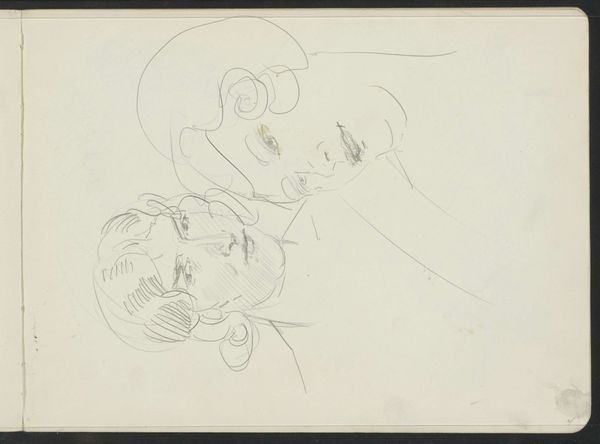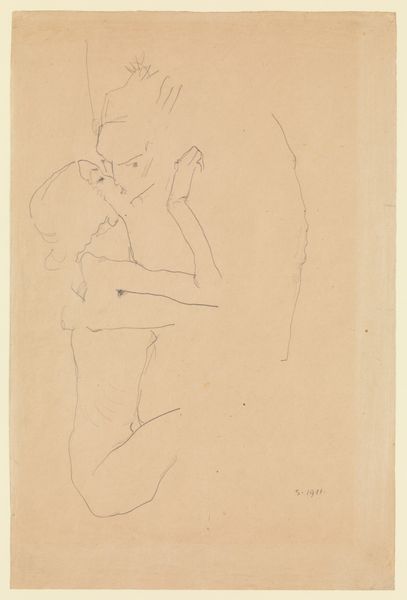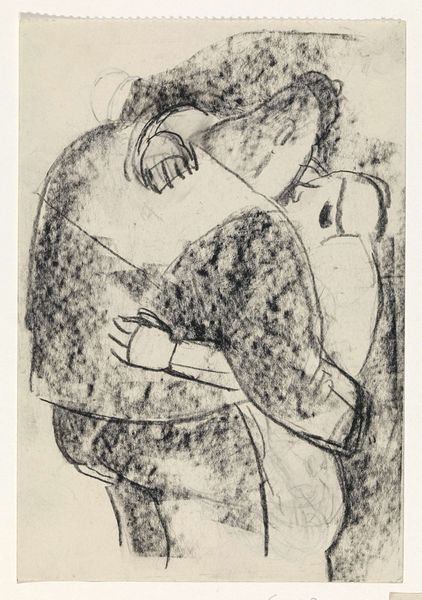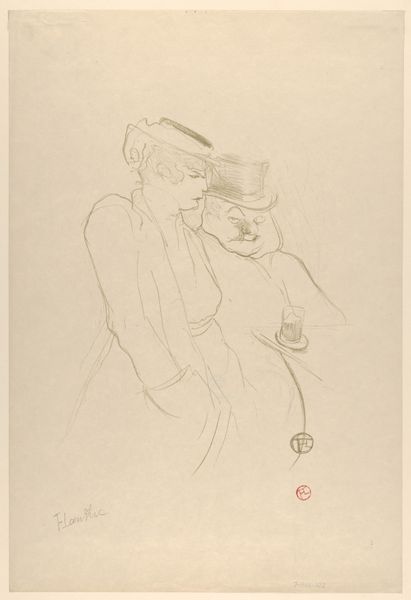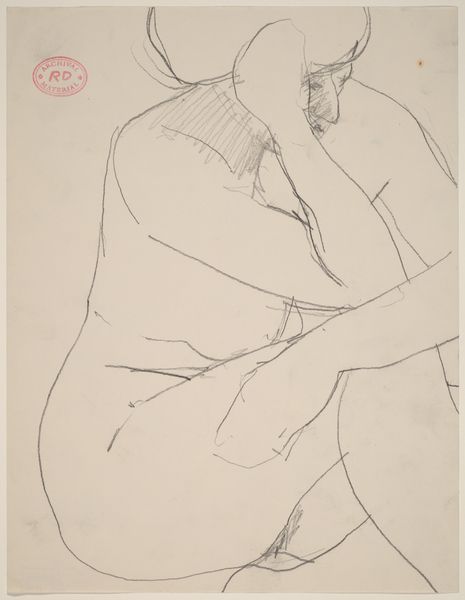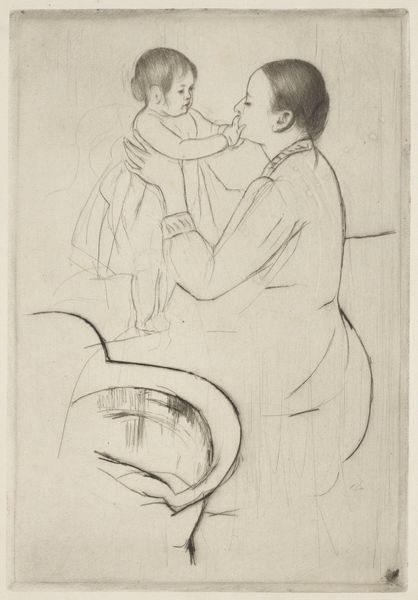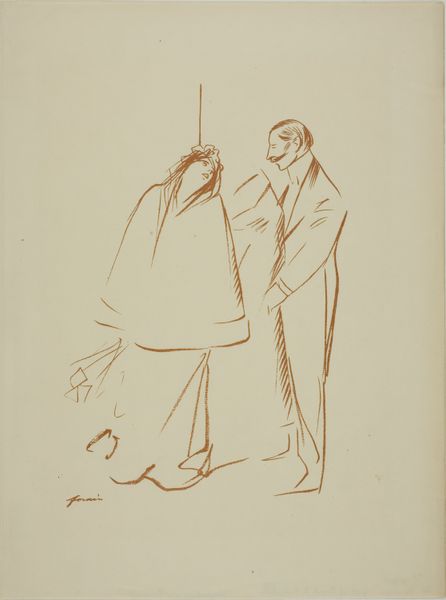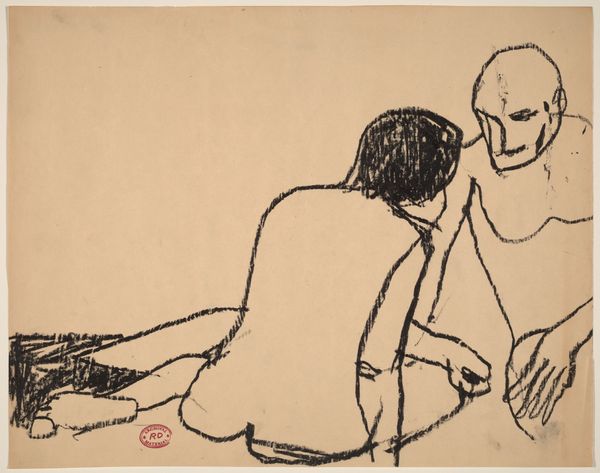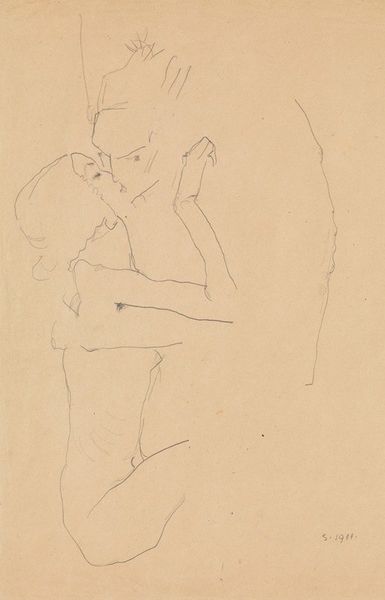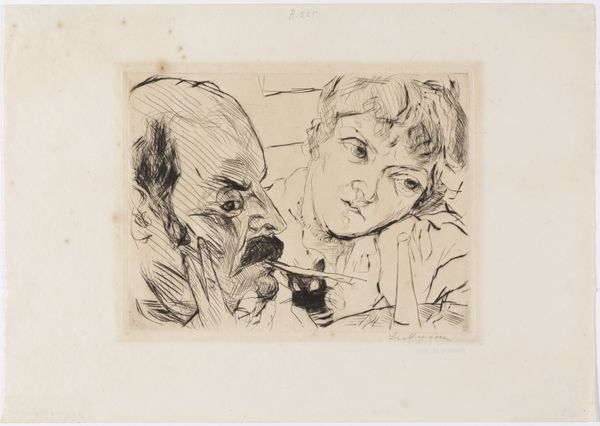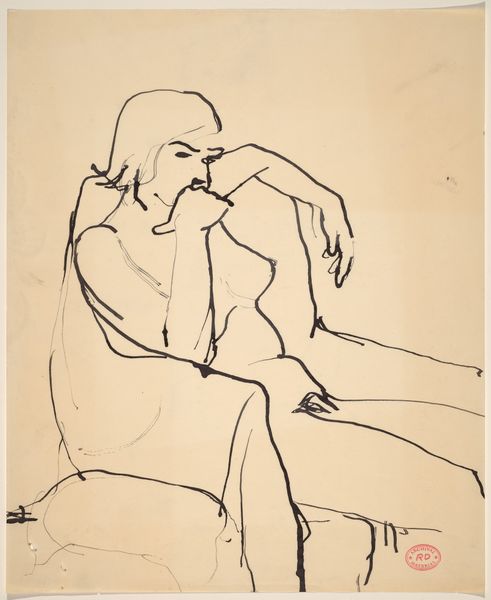
drawing, mixed-media, print, ink
#
portrait
#
drawing
#
mixed-media
#
ink drawing
# print
#
pen sketch
#
pencil sketch
#
figuration
#
ink
#
group-portraits
#
expressionism
#
portrait drawing
Dimensions: overall: 59 x 46 cm (23 1/4 x 18 1/8 in.)
Copyright: National Gallery of Art: CC0 1.0
Curator: Well, this is intense. It feels like…dissection, but emotional. Editor: You're right, there's an undeniable rawness. What we're looking at is Heinrich Hoerle’s "Das Ehepaar," or "The Married Couple," a mixed-media piece rendered circa 1920. The figures... they’re really something, aren’t they? Curator: Yes, I keep circling back to the hands. Clenched and bound, they seem to represent so much: constriction, connection, even prayer. The entire composition has a sort of devotional feeling. It reminds me of how some couples become almost fused over time. What's striking is how he's rendered their inner worlds almost externally, with visible emotion in every pen stroke. Editor: Exactly! Hoerle's style aligns with Expressionism, which favored emotional experience over physical reality, but this work stands out for its brutal honesty. Look at the time it was created—post-World War I, a period marked by profound disillusionment and trauma in Germany. The visible anguish speaks volumes. One can understand how the Great War destroyed or changed a relationship. The way he renders gender is fascinating, with the female character portrayed with such vulnerability, and the man with, dare I say, a dominating presence through his looming head and neatly kept, proper attire. This is where traditional dynamics are turned inside-out and are revealed here without censorship. Curator: You’re totally right! They’re interdependent. This couple might be holding on for dear life or struggling with power dynamics within their personal relationship. Is it their fault, though? The man looks… almost monstrous in a way, bald and bloated, but the overall effect isn’t condemnation. It's observation. Almost clinically detached, in some weird way. Editor: True. Consider Hoerle's background. He aligned with the Cologne Progressives, a group advocating for social change. “The Married Couple” might symbolize the constraints placed upon individuals and their relationships by societal expectations and the psychological tolls of a damaged and suffering nation in post-war Europe. He seems to imply it affects the individual, and then their marriage, relationships, their whole life gets destroyed, and with it goes along every prospect of happiness. The chains we're seeing here are very tangible and historical, indeed. Curator: Thinking about the emotional dissection versus observation idea again—Hoerle is definitely laying everything bare but leaves space to allow viewers to empathize. It really makes you think about partnership as survival sometimes, you know? Editor: Indeed. It provides some deep insight into the emotional turbulence of that era.
Comments
No comments
Be the first to comment and join the conversation on the ultimate creative platform.

